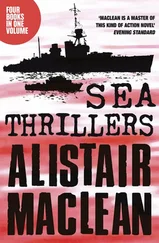For the work products, you need to record who writes them, who reads them, and what they contain. A fuller version would contain a sample, noting the tolerances permitted and the milestones that apply. Here are a few simple descriptions:
Overall Project Plan
Writer: Cross-team Lead.
Readers: Executive Sponsor, Team Leads, newcomers.
Contains: Across all teams, what is planned to be in the next several releases, the cross-team dependencies between their contents, the planned timing of development.
Dependency Table
Writer: Team Lead.
Readers: Team Leads, Cross-team Leads. Contains: What this team needs from every other team, and the date each item is needed. May include a fallback plan in case the item is not delivered on time.
Team Status Sheet
Writer: Team Lead.
Readers: Cross-team Lead, Developers. Contains: The current state of the team: rolled up list of things being worked on, next milestone, what is holding up progress, and stability level for each.
For the review milestones, record what is being reviewed, who is to review it, and what the outcome is. For example:
Release Proposal Review
Reviewers: Application Team Lead, Cross-team Lead, and Executive Sponsor.
Purpose: Basically a scope review. Reviewing: Use case summary, use cases, actors, external system description, development plan. Outcome: Modifications to scope, priorities, dates, possibly corrections to actor list or external systems.
Application Design Review
Reviewers: Team Lead, related Cross-team Leads, Cross-Team Mentors, Business experts. Purpose: Check quality, correctness, and conformance of the application design. Reviewing: Use cases, actors, domain class diagram, screen flows, screen designs, class tables (if any), and interaction diagrams (if any). Outcome: Factual corrections to the domain model, to the screen details. Suggestions or requirements for improved UI or application design, based on either quality or conformance considerations.
With these short paragraphs in place, the methodology can be summarized by role (as the following two examples show). The written form of the methodology, summarized by role, is a checklist for each person that can be fit onto one sheet of paper and pinned up in the person’s workspace. That sheet of paper contains no surprises (after the first reading) but serves to remind team members of what they already know.
Here is a slightly abridged example for the programmers:
Designer-Programmer
Writes
Weekly status sheet
Source code
Unit tests
Release notes ...
Reads:Actor descriptions
UI style guide ...
Reviews:
Application design review
(etc.)
Publishes:
Application. configuration
Test cases
(etc.)
Declares: UI Stable
You can see that this is not a methodology used to stifle creativity. To a newcomer, it is a list outlining how he is to participate on the team. To the ongoing developer, it is a reminder.
Using the Process Miniature
Publishing a methodology does not convey the visceral understanding that forms tacit knowledge. It does not convey the life of the methodology, which resides in the many small actions that accompany teamwork. People need to see or personally enact the methodology.
My currently favorite way of conveying the methodology is through a technique I call the Process Miniature.
In a Process Miniature, the participants play-act one or two releases of the process in a very short period of time
On one team I interviewed, new people were asked to spend their first week developing a (small) piece of software all the way from requirements to delivery. The purpose of the week-long exercise was to introduce the new person to the people, the roles, the standards, and the physical placement of things in the company.
More recently, Peter Merel invented a one-hour process miniature for Extreme Programming, giving it the nickname Extreme Hour. The purpose of the Extreme Hour is to give people a visceral encounter with XP so that they can discuss its concepts from a base of almost-real experience.
In the Extreme Hour, some people are designated "customers." Within the first 10 minutes of the hour, they present their requests with developers and work through the XP planning session.
In the next 20 minutes, the developers sketch and test their design on overhead transparencies. The total length of time for the first iteration is 30 minutes.
In the next 30 minutes, the entire cycle is repeated so that two cycles of XP are experienced in just 60 minutes.
Designer-Programmer
Writes Weekly status sheet
Source code
Unit tests
Release notes ... Reads:Actor descriptions
UI style guide ... Reviews: Application design review
(etc.) Publishes: Application. configuration
Test cases
(etc.)
Usually, the hosts of the Extreme Hour choose a fun assignment, such as designing a fish-catching device that keeps the fish alive until delivering them to the cooking area at the end of the day and also keeps the beer cold during the day. (Yes, they do have to cut scope during the iterations!)
We used a 90-minute process miniature to help the staff of a 50-person company experience a new development process we were proposing (you might notice the similarity of this process miniature experience to the informance described on page ???) [insert cross-ref]
In this case, we were primarily interested in conveying the programming and testing rules we wanted people to use. We therefore could not use a drawing-based problem such as the fish trap but had to select a real programming problem that would produce running, tested code for a Web application. A Process Miniature Experience
We wanted to demonstrate two full iterations of the process in 90 minutes. We wanted to show people negotiating over requirements and then creating and testing production of code, using the official five-layer architecture, execution database, configuration management system, official Web style sheets, and fully automated regression test suites. We therefore had to choose a tiny application. We elected to construct a simple up-down counter that would stick at 0 and 20 and could be reset to 0. The counter would use a Web browser interface and store its value in the official company database.
To meet the constraint of 45 minutes per iteration, we choreographed the show to a small extent. The marketing analysts were told to ask for more than the team could possibly deliver in 30 minutes of programming ("Could we please have a graphical, radial dial for the counter, in three colors?"). We did this in order to let the audience experience scope negotiation as they would encounter it in real life.
We also rehearsed how much the programmers would bid to complete the first iteration and how they might cut scope during the middle of the iteration so that the audience could see this in action.
The point of scripting these pieces was to give the entire company a view of what we wanted to establish as the social conventions for normal scope negotiation during project runs. We left the actual programming as live action. Even though the team knew the assignment, they still had to type it all in, in real time, as part of the experience. The audience, sitting through all of the typing, came to appreciate the amount of work that went into even such a trivial system.
Whatever form of Process Miniature you use, plan on replaying it from time to time in order to reinforce the team’s social conventions. Many of these conventions, such as the scope negotiation rules just described, won't find a place in the documentation but can be partially captured in the play.
Methodology Design Principles
Designing a methodology is not at all like designing software, hardware, bridges, or factories. Four things, in particular, get in the way:
Читать дальше










